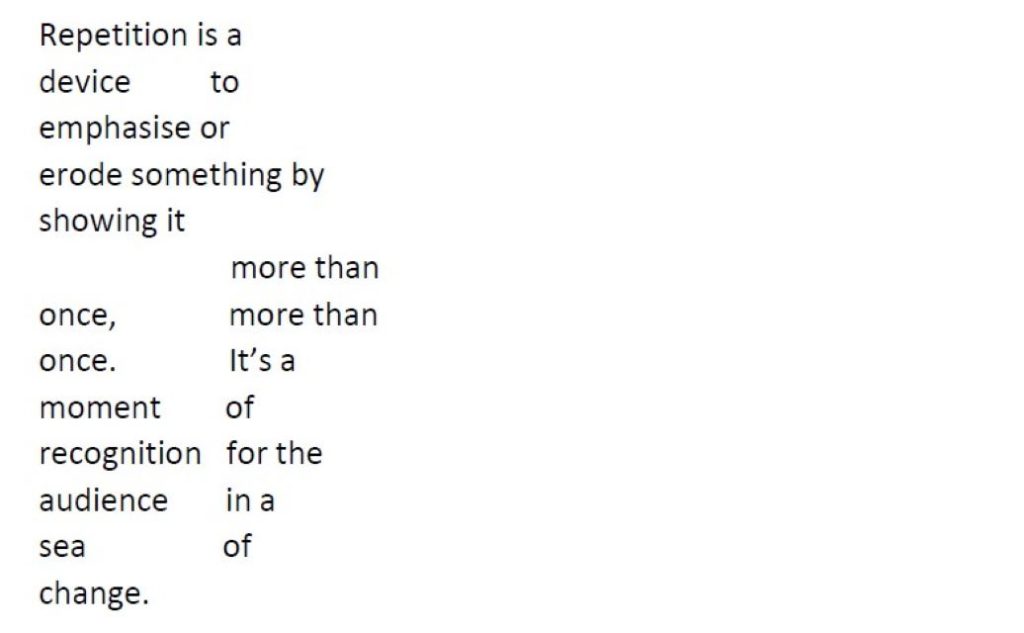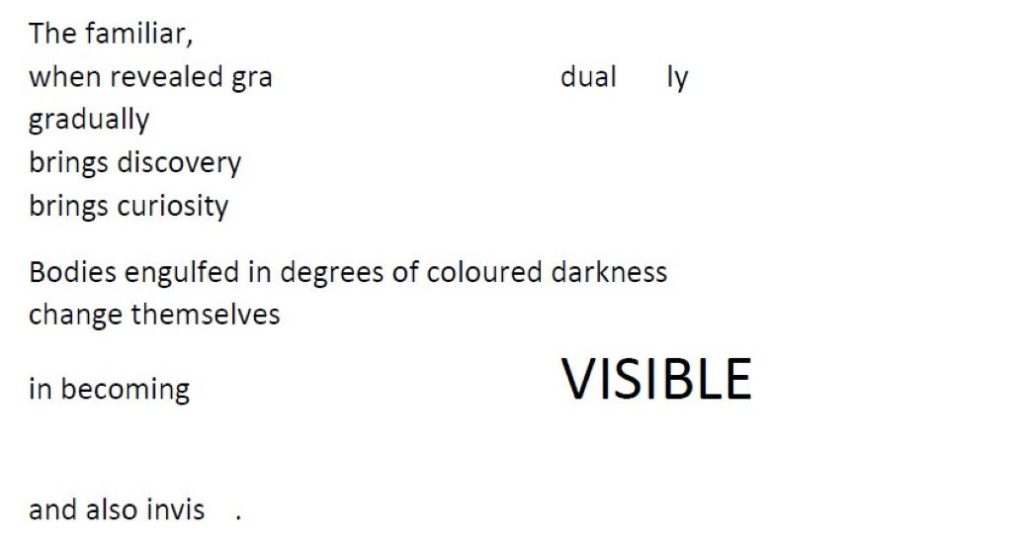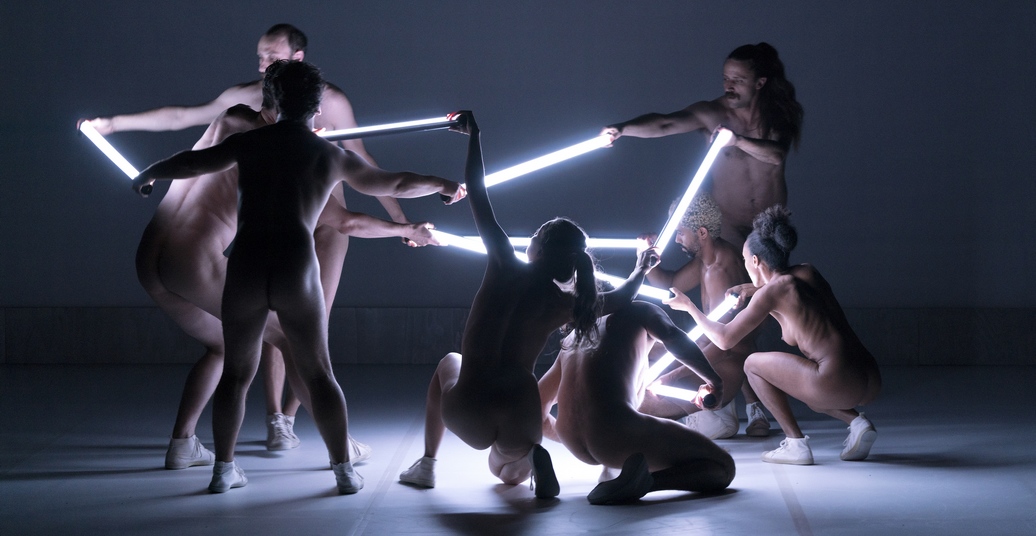“Moving in Concert” by choreographer Mette Ingvartsen premiered in Germany with the opening evening of the Potsdamer Tanztage 2023. The performance that is read here as a formal study of the interaction of light and movement inspires a short choreography handbook.
A Choreography Handbook after ‘Moving in Concert’
MATERIALS
Materials are non-living objects or living beings that will animate your performance space. You may use materials consisting of different qualities and dimensions. Some questions to consider: How will the materials be used and can they be re-used for future performances? Will the materials behave reliably and uniformly every time? How precious are these materials if any of them are somehow lost? (For instance, what if a charming curious man picks up a single pebble and takes it in his pocket to show it to his dance-writer partner?)
Weight
Materials of various dimensions may naturally possess different weight properties. Small pebbles will work differently from large stones or from human bodies for that matter. It also depends on what material the stones themselves are made of. Consider if the materials are of compatible weights: Could the weight of one destroy another? For instance, can a pebble or stone hurt a dancer? Can the dancer crush the tubelight?
Texture
Where is the performance being viewed from? Can the texture of the materials be felt by the audience or merely seen? The experience you know as a choreographer may not be what is transmitted. Rough. Soft. Granulated.
Opacity
Thick. Wafer thin. Opaque. Some materials may be 100% opaque, such as the human body. The opacity of an object may be tested in the presence of light. Some objects such as a tubelight (a fluorescent lamp) may be a source of light themselves, but in fact not entirely opaque. Opacity especially becomes a relevant theme when deciding where the source of light will be placed with respect to any material in the space. (See also: Light)
Technology
Some materials may require scientific expertise to construct. Some may even need to be invented. Human bodies are also a highly evolved technology in themselves. Consider if it may evolve in intelligence, thereby altering the choreography involuntarily? Note that technology can also become obsolete.
Costumes
If you have an ensemble to work with, these are certainly an extra cost. If you decide to do away with the costumes, the bodies of the performers remain. What story does a body without costumes narrate? (See also: Technology)
MOVEMENT
Repetition
An action repeated twice may already change or appear transformed. An action repeated by nine bodies over several minutes makes distinctions visible – the absolute perhaps unintentional synchronicity and the slight lag in all bodies following their own projectile, a body that pauses, a change in direction. Repetition also makes some aspects not immediately visible such as the gradual change in light.

from Jonathan Burrow’s A Choreographer’s Handbook,
where he quotes from ‘Cheap Lecture’
by Jonathan Burrows and Matteo Fargion,
commissioned by Cultureel Centrum Maasmechelen
and Dans in Limburg, 2009
A poem on repetition
from a lecture repeated by two bodies,
quoted in a response text pretending to be a choreography handbook written by a writer in the process of reading the choreography handbook where the poem is printed.
Do / Could words repeated twice in a sentence mean the same?
Repetition
Note to reader: Read the above again.
Repeating it twice, does it stand changed?
Patterns
The human mind attempts to find patterns in movement.
Consider where you may alter them. Some bodies bend or sit as other bodies spiral.
Consider where they may alter by themselves. Pebbles may fall vertically down a shaft, each with their own pattern of falling, landing, rolling off.
Consider where new patterns may appear unbeknownst to you. Light from a rotating tubelight falling on the rear wall makes it appear as though light itself is folding. Some patterns of blinking lights may appear as a message in Morse code. Maybe someone in your audience will read it after all. (See also: Light)
Reveal

Facial Expression
Are faces part of the movement or the costume? What expressions would the movers wear and does this remain constant or dissonant? The eyes of the dancers may lead the audience to somewhere inward or to distant nowhere.
What if the formality of frozen faces was betrayed or broken by some moments of pathos in expression?
SOUND
Subtle
The sources of sound may be subtle, such as the gentle hum of falling pebbles and the chattering human voices illuminating themselves and one another. (See also: Time)
Loud
Scream.
Drone.
LIGHT
Light can be a strong character such that the audience watches the light, not the moving bodies of the living performers. (See also: Reveal)
Heat will produce light. Light may not always possess or produce heat.
Visible light is defined as having wavelengths of 400 – 700 nanometres between the longer wavelengths (infrared) and shorter wavelengths (ultraviolet).
Visibility
A horizontal light is different from a vertical light, different from a □ – shaped light.
Visibility is one way of proving that something may most likely be real. The rain of pebbles may barely be visible but the mound it gathers in on the floor makes them real. The humming sound of the of falling pebbles too, make it audible, and therefore, visible through another sense organ. (See also: Sound)
Shadow
The source of light may be a fixed point or may be mobile. This decision will influence the shadows falling, moving, and stalling. It will distort and play with proportions of human bodies and falling pebbles.
TIME
In performance, time can be experienced as subjective even while being uniform. This is called the sense of time.
Sound can be a way of keeping time. Pebbles can be falling one minute or over an hour. Time may thus be prolonged, slowed down, sped up.
Movement can be a way of keeping time. Movement repeated over a long period of time may lead to a flow and an unstoppable inertia. What makes it the movement stop? (See also: Patterns)
The Contemporary dance festival Potsdamer Tanztage is running from 30 May to 11 June 2023, find the full program at potsdamer-tanztage.de .




